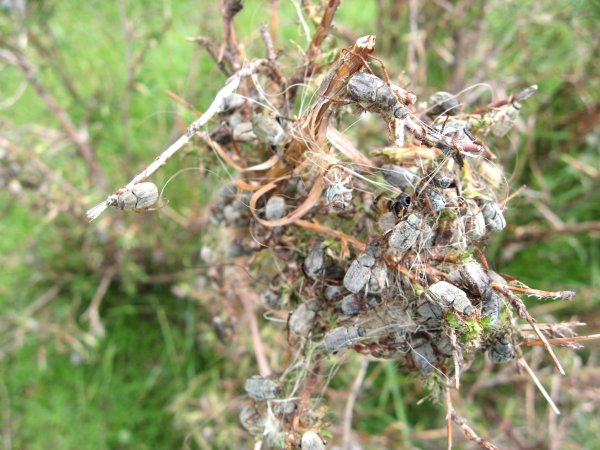Zhang, Q.H., Ma, J.H., Yang, Q.Q., Byers, J.A., Klein, M. G., Zhao, F.Y., and Luo, Y.Q. 2011. Olfactory and
visual responses of the long-legged chafer Hoplia spectabilis Medvedev (Coleoptera: Scarabaeidae) in
Qinghai province, China. Pest Management Science 67:162-169.  pdf
pdf
 Abstract -
BACKGROUND: Monitoring traps and control methods are needed for the long-legged chafer, Hoplia spectabilis Medvedev,
which has recently reached outbreak numbers in pastureland of Qinghai Province, China.
Abstract -
BACKGROUND: Monitoring traps and control methods are needed for the long-legged chafer, Hoplia spectabilis Medvedev,
which has recently reached outbreak numbers in pastureland of Qinghai Province, China.
RESULTS: Field trapping experiments, using cross-pane funnel (barrier) traps, showed that H. spectabilis adults were not
significantly attracted to branches of the host plant Dasiphora fructicosa (L.) Rydb. However, beetles were slightly attracted to
similar host plant branches infested by conspecific beetles, possibly owing to weakly attractive volatiles, primarily (Z)-3-hexenyl
acetate, released from beetle-damaged host leaves. This compound was weakly attractive when released from traps. However,
H. spectabilis beetles showed strong visual responses to yellow- or white-painted trap panes, with weaker responses to blue,
red or green panes, and least response to black panes. Black traps at 0.2-1.5m above ground intercepted significantly more
beetles than traps at 2.5 m. The mean flight height based on trap catches was 0.88 m (SD = 0.76), yielding an effective flight
layer of 1.9 m. Flight response of beetles to colored barrier traps occurred between 10:00 and 18:00, and peaked between
12:00-14:00, when daily temperatures reached their maximum.
CONCLUSION: Unbaited yellow or white cross-pane funnel traps are recommended for both monitoring and mass-trapping
programs against this economically and ecologically important scarab beetle.


Chemical Ecology

 Abstract -
BACKGROUND: Monitoring traps and control methods are needed for the long-legged chafer, Hoplia spectabilis Medvedev,
which has recently reached outbreak numbers in pastureland of Qinghai Province, China.
Abstract -
BACKGROUND: Monitoring traps and control methods are needed for the long-legged chafer, Hoplia spectabilis Medvedev,
which has recently reached outbreak numbers in pastureland of Qinghai Province, China.


